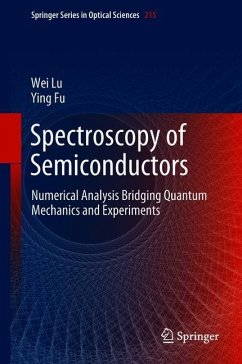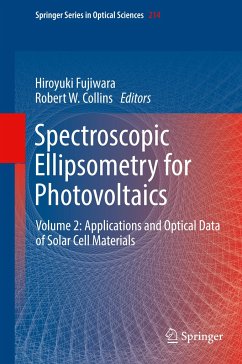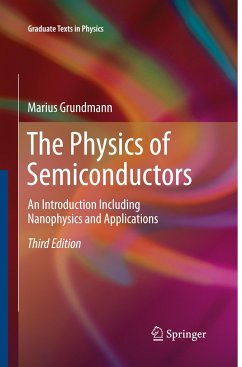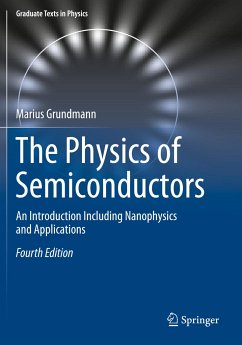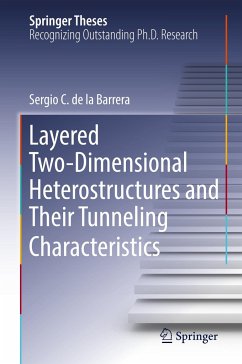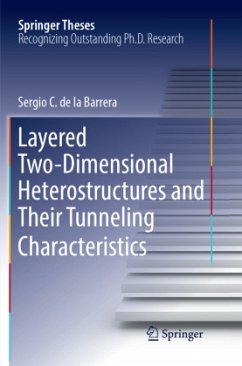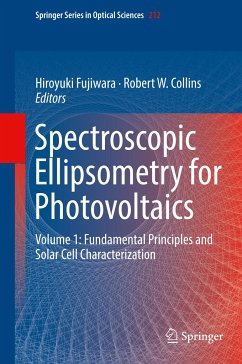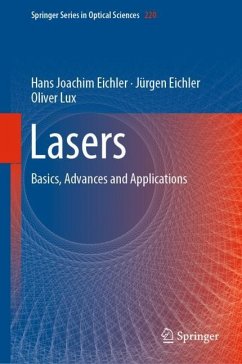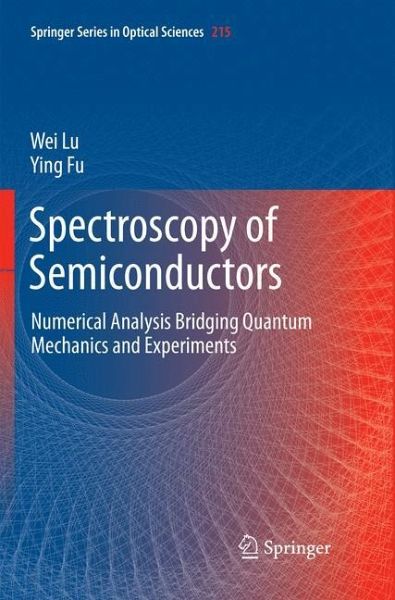
Spectroscopy of Semiconductors
Numerical Analysis Bridging Quantum Mechanics and Experiments
Versandkostenfrei!
Versandfertig in 6-10 Tagen
98,99 €
inkl. MwSt.
Weitere Ausgaben:

PAYBACK Punkte
49 °P sammeln!
The science and technology related to semiconductors have received significant attention for applications in various fields including microelectronics, nanophotonics, and biotechnologies. Understanding of semiconductors has advanced to such a level that we are now able to design novel system complexes before we go for the proof-of-principle experimental demonstration.This book explains the experimental setups for optical spectral analysis of semiconductors and describes the experimental methods and the basic quantum mechanical principles underlying the fast-developing nanotechnology for semico...
The science and technology related to semiconductors have received significant attention for applications in various fields including microelectronics, nanophotonics, and biotechnologies. Understanding of semiconductors has advanced to such a level that we are now able to design novel system complexes before we go for the proof-of-principle experimental demonstration.
This book explains the experimental setups for optical spectral analysis of semiconductors and describes the experimental methods and the basic quantum mechanical principles underlying the fast-developing nanotechnology for semiconductors. Further, it uses numerous case studies with detailed theoretical discussions and calculations to demonstrate the data analysis. Covering structures ranging from bulk to the nanoscale, it examines applications in the semiconductor industry and biomedicine. Starting from the most basic physics of geometric optics, wave optics, quantum mechanics, solid-state physics, it provides a self-contained resource on the subject for university undergraduates. The book can be further used as a toolbox for researching and developing semiconductor nanotechnology based on spectroscopy.
This book explains the experimental setups for optical spectral analysis of semiconductors and describes the experimental methods and the basic quantum mechanical principles underlying the fast-developing nanotechnology for semiconductors. Further, it uses numerous case studies with detailed theoretical discussions and calculations to demonstrate the data analysis. Covering structures ranging from bulk to the nanoscale, it examines applications in the semiconductor industry and biomedicine. Starting from the most basic physics of geometric optics, wave optics, quantum mechanics, solid-state physics, it provides a self-contained resource on the subject for university undergraduates. The book can be further used as a toolbox for researching and developing semiconductor nanotechnology based on spectroscopy.





